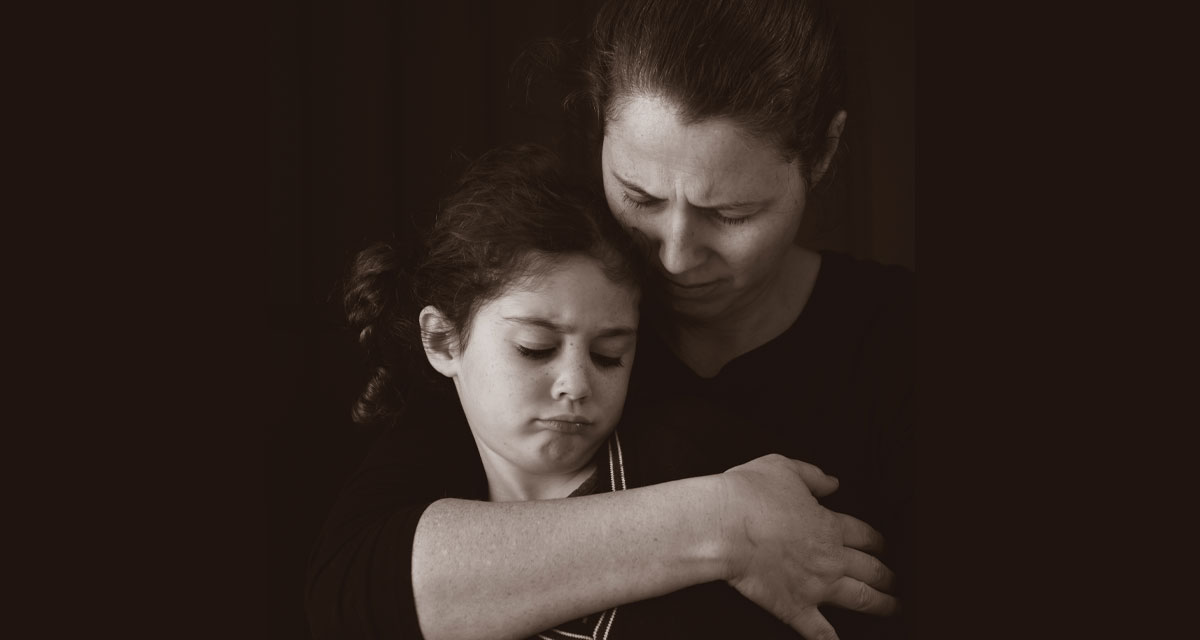During the past year and a half, children have gone through many challenges. Understanding and living through a pandemic, virtual learning and adjusting back to a somewhat normal school year in the classroom has been tough for many. Multiple changes in a short period of time have daily impacts that can bring on new emotions and feelings. Since the beginning of the pandemic, there has been a rise in anxiety in people, including children. Studies have shown that anxiety has doubled in children. However, anxiety was around in children even before the pandemic. The good news is there are ways parents and guardians can help their anxious children, including the ones below.
- First and foremost, help your child relax when they are anxious. Comfort them. You can’t help them overcome their fears when they are afraid or panicking. During this time, their body is in a fight or flight stage. Help them calm down in whatever way works best for your child. Once relaxed, you can then move forward.
- Acknowledge their feelings and work towards managing their anxiety on a daily basis. Children need to feel respected and empowered when battling anxiety. Make them feel validated. Don’t skip over the fact that they are anxious and make sure the goal isn’t to eliminate anxiety, but to manage it in a healthy way. Find ways to ease stress triggers and come up with coping strategies. Over time, the anxiety will decrease.
- Create realistic and positive expectations when learning coping strategies. Take it step by step, day by day. Always give them confidence and positive affirmations when they are doing anything, no matter if it is a hard or easy task. However, be careful to not let your child avoid the hard tasks or tasks that make them anxious. Walk them through these activities and show your support. Have open conversations about why this task may be difficult and why they will be able to manage it. When a challenging activity is overlooked or parents pull their child away from it, it could have a reverse effect. Your child will then form a coping mechanism and mindset that it is okay to avoid the hard stuff instead of confidently facing it.
- Talk things through with your child. One of the best ways to show support is by giving a listening ear. When your child is facing a fear, come up with a plan on how to handle the situation, especially when the unexpected may come up. For example, if your child is worried about someone not picking them up on time from practice, determine the steps of what to do, such as the trusted adults to stay with until their ride comes. Knowing what to do in advance can help lessen anxiety and provide comfort for many.
- Don’t reinforce or strengthen your child’s stress triggers. When you are having the planning conversations, be aware of your tone and body language. Use positive language and don’t unintentionally send a message that the child should be worried about something. Instead, encourage them and let them know that you appreciate their hard work on learning how to manage their anxiety. Don’t ask questions such as “are you anxious about….” Rephrase your words to something similar like “how are you feeling about…?” This small change can make a world of difference for some.
- Model healthy tips to handle anxiety in front of your child. Sometimes children learn best from watching others. Practice using coping strategies with your child and regulating your anxiety over time. However you would like for your child to work with their anxiety, showcase those tips in all that you do.
Anxiety comes from the fear of the unknown. It happens to everyone at some point in their lives. But, for a child, anxiety can feel as if they are losing control and don’t know what is happening to them. If this happens to your child, always make sure they feel loved and supported, then walk them through a step by step plan on how to effectively handle their anxiety. For some, anxiety will always be there, but a person can still live a wonderful life even while battling it.



















